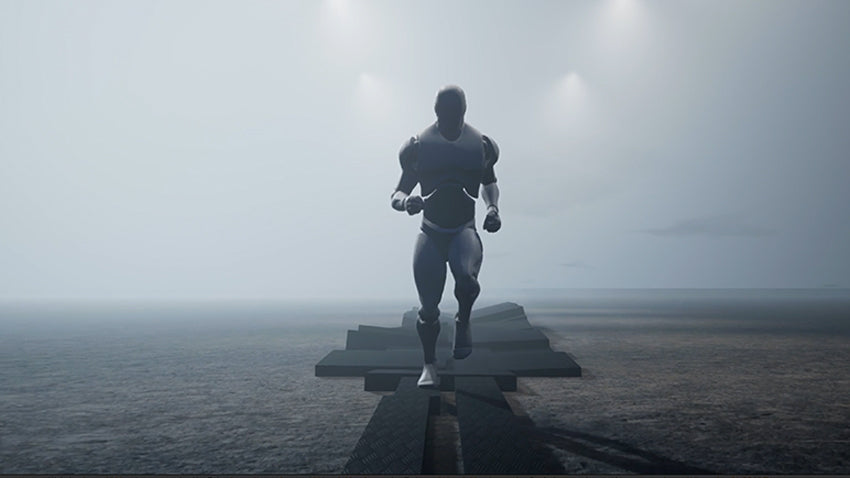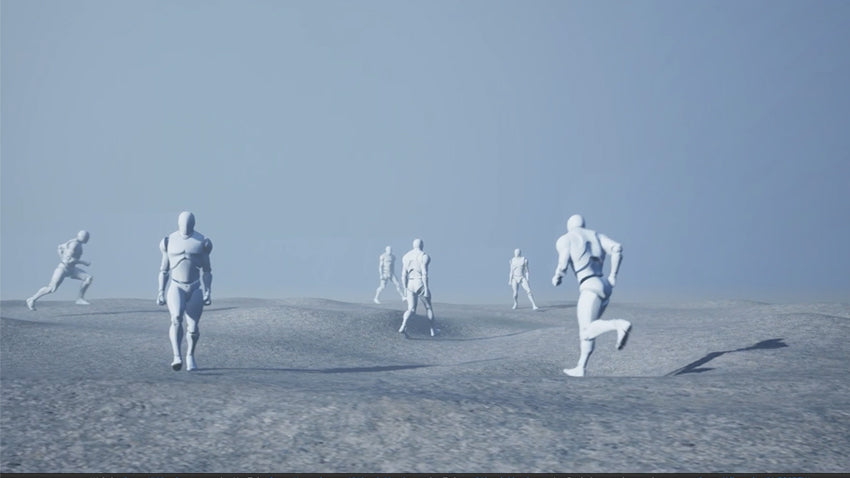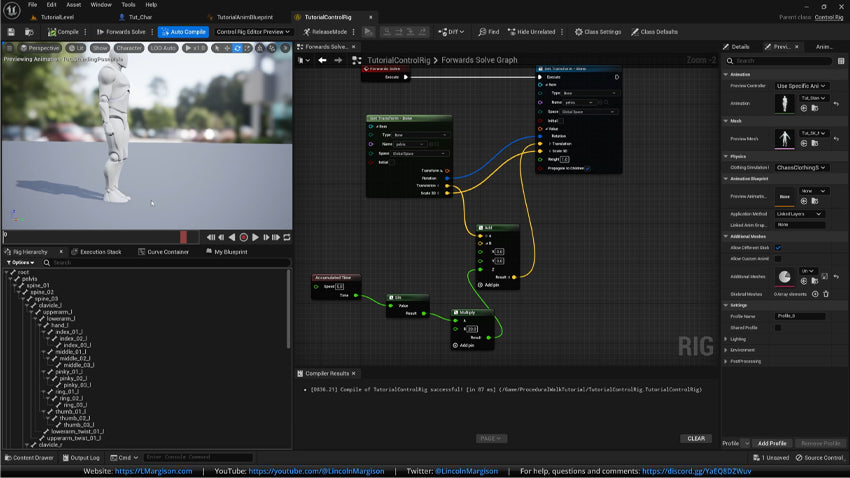70% Off Procedural animation for humans in Unreal Engine 5 | Udemy Review & Coupon
70% Off Procedural animation for humans in Unreal Engine 5 | Udemy Review & Coupon
Couldn't load pickup availability
Develop an animation system that is versatile and can be customized to accommodate various character movement styles.
This course covers:
This 9-hour on-demand video course on Procedural Animation for Humans in Unreal Engine 5 provides comprehensive instruction to help you master the creation of realistic human animations. You will learn how to use tools within Unreal Engine 5, such as the Animation Graph, Animation Toolkit, and various rigging techniques, to build sophisticated human characters with detailed and lifelike behavior. The course comes with a downloadable resource package and provides access to a certificate of completion upon successful completion.
What you'll learn
A procedural animation is an important tool in the modern animator’s toolkit. It allows for highly intricate and sophisticated motion that can be difficult or time-consuming to create with traditional keyframe techniques. This course will cover the fundamentals of procedural animation and provide comprehensive instruction on creating a fully procedural walk-and-run cycle. It will teach how to analyse and incrementally improve your animations, build custom functionality within a control rig, control every element of animation through logic and variables, as well as using inverse kinematics (IK) for realistic foot placement.
In this course, you will learn basics such as timing considerations, body mechanics, and foot placement - all with a focus on efficient workflows while compressing the timeline. You will explore approaches that enable efficient exploration so that desirable results are achieved faster with fewer iterations via audio-driven cycles, mixamo-based cycles combined with hand-animation touches, as well as rigging variables to give greater levels of control over individual characters or even entire group scenarios at one time. With these tools, you'll have all you need to confidently assume creative responsibility for bringing procedural assets to life!
About the author
Lincoln Margison
As a game developer with 15 years of experience, I am highly knowledgeable about Unreal Engine. During that time, I have worked on development projects with various leaders in the industry and my own company which I co-founded. What sets me apart as an expert instructor is my particular focus in the look dev area, which covers the technical aspects of creating textures, lighting, and geometry within digital environments to achieve a desired aesthetic. Moreover, I specialize in gameplay prototyping, where my knowledge of procedural animation systems allows me to create innovative designs that facilitate natural movement and behaviors.
My wealth of knowledge provides value to any who is interested in learning how to make games as a profession or hobby. As such, I take great pride in understanding what it takes to produce high-quality video game entertainment and passing that information on to others looking for guidance. With expertise developed through experience, students will learn from proven methods that have established strong results over many years within the industry.
Requirements
The requirements for this particular animation and control rig tutorial are minimal; participants will not need to have any prior experience with animations or control rigs. They should, however, gain a basic understanding of Unreal Engine to get the most out of the tutorial as this will help in following the steps which are demonstrated and explained in detail.
Description
This course is designed to help individuals create fully procedural walk/run animation systems entirely within Unreal Engine 5.1+. With this system, users will be able to control every aspect of their character’s walk-and-run style using Control Rig, allowing for improved performance with multiple characters. Results can be seen quicker than with traditional static animations as users can tweak individual variables to adjust the motion without having to start the entire process over again. Furthermore, these movements look more natural and unique as they are updated in real time according to the surroundings or environment.
The logic behind this is similar to how a human would navigate an area; depending on the terrain, strides will get longer or shorter, weight shifts need to be implemented correctly, and hips & spine may need to swing in order for them to move realistically. With this course, users learn how the characters interact with their environment and how simple changes in numbers can determine an entirely new style for each character. Whether it's adding more weight or agility during movement or changing up the stances and jumps entirely - it's all possible by simply changing up some of their built-in functionalities. Students also take away a downloadable version of the system as a reference upon completion of the course.
The course will go over the various aspects of procedural animation, including how to set up Control Rig, build and tweak curves for dynamic motion, create custom meshes for characters and props, and use Mixamo cycles. This tutorial also provides guidance on how to integrate these elements together into a complete system as well as tips on optimizing performance. Students will learn about timing considerations in order to get the most out of their animations, as well as how to sync them with particular events or actions in-game. At the same time, they will also gain an understanding of the various tools and techniques which are necessary when creating a realistic movement for characters.
The tutorial is designed to be accessible to anyone who wants to improve their game development skills, regardless of experience level. It is available on both Windows and Mac platforms, as well as through Steam.
This course is intended for:
This course is designed for game developers, animators, and Unreal Engine developers who want to save hundreds of hours creating custom animation cycles by hand. By mastering the tools and techniques outlined in this course, users will be able to create walk cycles quickly and easily so they can spend more time on the other areas of their project.
Share:







